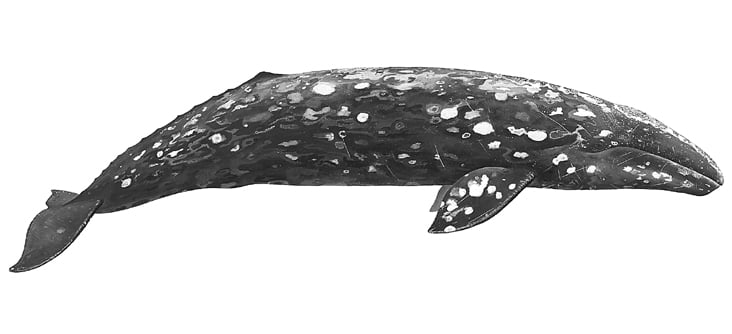
Gray Whale
Eschrichtius robustus
Length
Weight
Distribution
Population
Description
Gray whales participate in the longest mammal migration on Earth. The journey from their arctic feeding grounds in Alaska to their calving grounds in the isolated lagoons of Baja, Mexico (and back up to Alaska once more), is approximately 12,000 miles round-trip and takes 6-8 months to complete. During that time, Gray Whales rely heavily on a thick layer of blubber to provide the energy necessary for such a long trip.
Gray whales are extremely slow swimmers, traveling at about 3-5 miles per hour. For this reason, they were popular targets for commercial whalers and were hunted to the brink of extinction. Fortunately, hunting Gray Whales became a criminal act in 1946 and they have since made a full recovery in population. Gray whales also once traveled along the Atlantic coast. Unfortunately, the Atlantic population was unable to recover from whaling efforts and is now extinct.